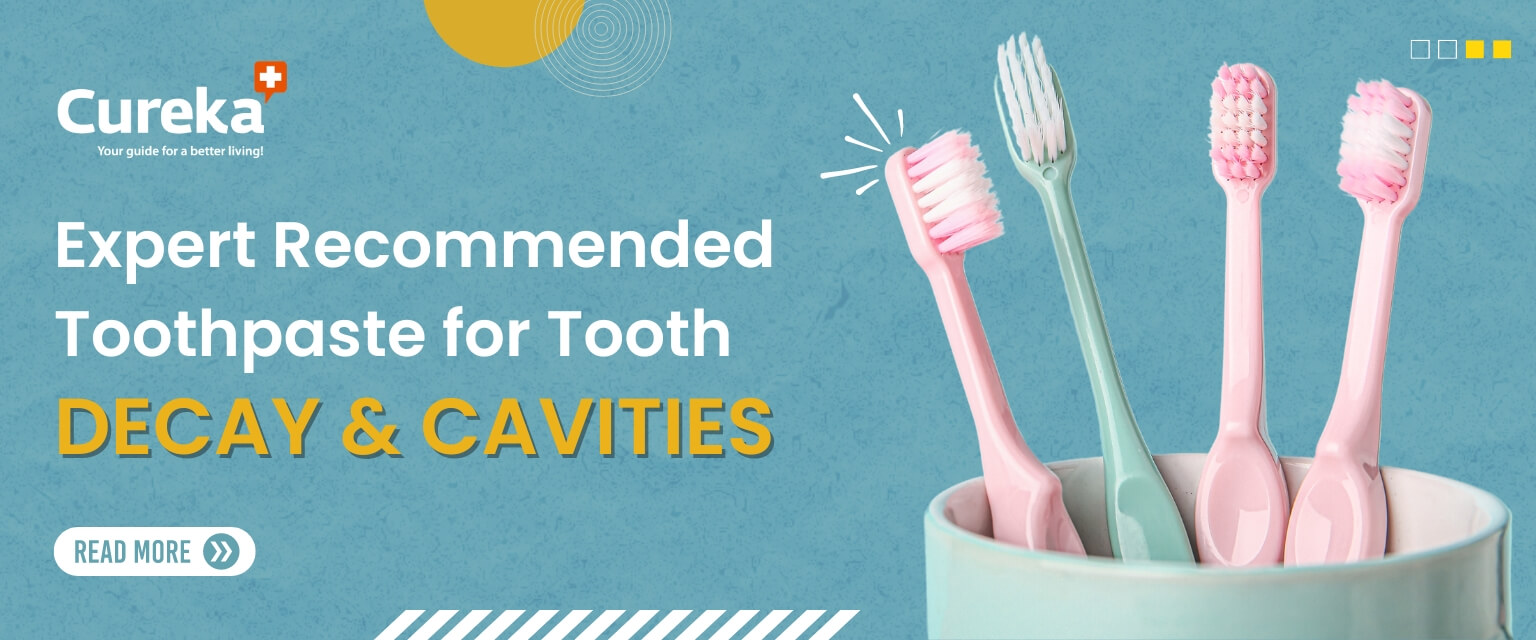Expert-Recommended Toothpaste for Tooth Decay and Cavities
When it comes to oral health, choosing the right toothpaste can make all the difference. Tooth decay and cavities are common problems that, if left untreated, can lead to more serious dental issues. The good news is that the best toothpaste for decay and cavity repair can help restore and maintain your oral health. In this blog, we will explore expert-recommended toothpaste options that effectively combat tooth decay and promote cavity repair.
Understanding Tooth Decay and Cavities
Tooth decay occurs when bacteria in your mouth break down sugars, producing acids that erode tooth enamel. Over time, this leads to cavities, which are tiny holes in the teeth. If left untreated, cavities can grow larger and cause pain, infections, and even tooth loss.
The right toothpaste is crucial in both preventing and treating tooth decay. By selecting a toothpaste for decay, you can strengthen your enamel and prevent the progression of cavities.
Key Ingredients to Look for in Expert-Recommended Toothpaste
Toothpaste for cavities and tooth decay often contains key active ingredients designed to protect enamel, reduce plaque, and repair damage. Here are some ingredients experts recommend for the best toothpaste for cavity repair:
- Fluoride: A staple in most toothpaste formulas, fluoride strengthens tooth enamel and helps prevent cavities. Common forms include sodium fluoride (NaF), mono-fluoro-phosphate (MFP), and stannous fluoride (SnF), with concentrations between 0.10%–0.15%. Not rinsing your mouth after brushing retains more fluoride in the oral cavity, enhancing its effects.
- Calcium and Phosphate: These minerals help repair early signs of decay by replenishing lost minerals in the enamel. Combined with fluoride, calcium and phosphate improve remineralization and further strengthen teeth.
- Xylitol: A natural sweetener that reduces the growth of cavity-causing bacteria and also increases saliva production, which plays a crucial role in maintaining oral health.
- Sodium Bicarbonate: This ingredient increases the pH of saliva, creating an environment less conducive to bacterial growth while also promoting remineralization of enamel.
Best Toothpaste for Decay and Cavity Repair
- Fluoride-Enhanced Toothpaste
Dentists often recommend fluoride-based toothpaste as the first line of defense against tooth decay. Fluoride works by remineralizing tooth enamel, making it more resistant to acid attacks. If you’re looking for a toothpaste for decay, start with one that has a higher concentration of fluoride, such as prescription-strength options.
- Toothpaste with Hydroxyapatite
Hydroxyapatite is a naturally occurring mineral in tooth enamel. Toothpaste with this ingredient helps to repair microscopic holes in the enamel and can be a highly effective toothpaste for cavity repair. Experts suggest that hydroxyapatite can be as effective as fluoride in reducing decay and strengthening teeth.
- Xylitol-Based Toothpaste
Xylitol not only fights bacteria that cause cavities but also promotes the production of saliva, which is vital for maintaining healthy teeth. Toothpaste containing xylitol is often expert recommended for those prone to tooth decay.
- Calcium Phosphate Toothpaste
For those with early signs of tooth decay, toothpaste with calcium and phosphate can help restore lost minerals. This toothpaste for cavity repair fills in the tiny lesions on enamel, helping prevent further decay.
- Toothpaste with Sodium Bicarbonate
Sodium bicarbonate (baking soda) toothpaste is highly effective at neutralizing acid in the mouth, which slows the progression of tooth decay. It also helps to remove surface stains on teeth and acts as a mild abrasive that cleans without damaging enamel.
Additional Anti-Caries Agents to Look For
- Stannous Fluoride
Stannous fluoride has been found to be more effective than sodium fluoride in some cases because of its additional antibacterial and antiplaque effects. It creates a protective calcium fluoride (CaF2) layer on the teeth, which acts as a reservoir for fluoride, further protecting teeth from future acid attacks.
- Triclosan and Zinc Ions
Triclosan is an antibacterial agent effective against both Gram-positive and Gram-negative bacteria, while zinc ions (Zn2+) restrict plaque formation and reduce the colonization of bacteria on tooth surfaces. Zinc citrate and zinc chloride are commonly used forms in toothpaste. Both zinc and stannous ions also aid in reducing bacterial enzyme activity, promoting healthier gums and reducing tooth decay risk.
How to Use Toothpaste for Maximum Cavity Prevention
Using the right toothpaste is only part of the solution. For the best results, follow these tips:
- Brush twice daily with your chosen toothpaste for decay.
- Make sure to use a toothbrush with soft bristles to avoid damaging your enamel.
- Floss daily to remove plaque between your teeth.
- Use mouthwash with additional fluoride for enhanced protection.
- Visit your dentist regularly for checkups and professional cleanings.
Conclusion
Tooth decay and cavities are serious dental issues that require attention. Choosing the right toothpaste can be a powerful tool in both preventing and repairing the damage caused by cavities. Expert-recommended options such as fluoride, hydroxyapatite, stannous fluoride, and xylitol-based toothpaste can offer effective solutions. Be sure to choose the best toothpaste that meets your specific oral health needs to keep your teeth healthy and cavity-free.
By incorporating the right toothpaste for cavity repair into your daily routine, you can take control of your oral health and enjoy a brighter, healthier smile.
References :
- Formulation ingredients for toothpastes and mouthwashes- 2004 Nov- https://www.ncbi.nlm.nih.gov/pmc/articles/PMC7245492/
- Fluoride toothpastes of different concentrations for preventing dental caries – 2019 Mar – https://www.ncbi.nlm.nih.gov/pmc/articles/PMC6398117/
- Prevention of Dental Caries: A Review on the Improvements of Toothpaste Formulations from 1900 to 2023- 2024 Mar – https://www.ncbi.nlm.nih.gov/pmc/articles/PMC10969581/











